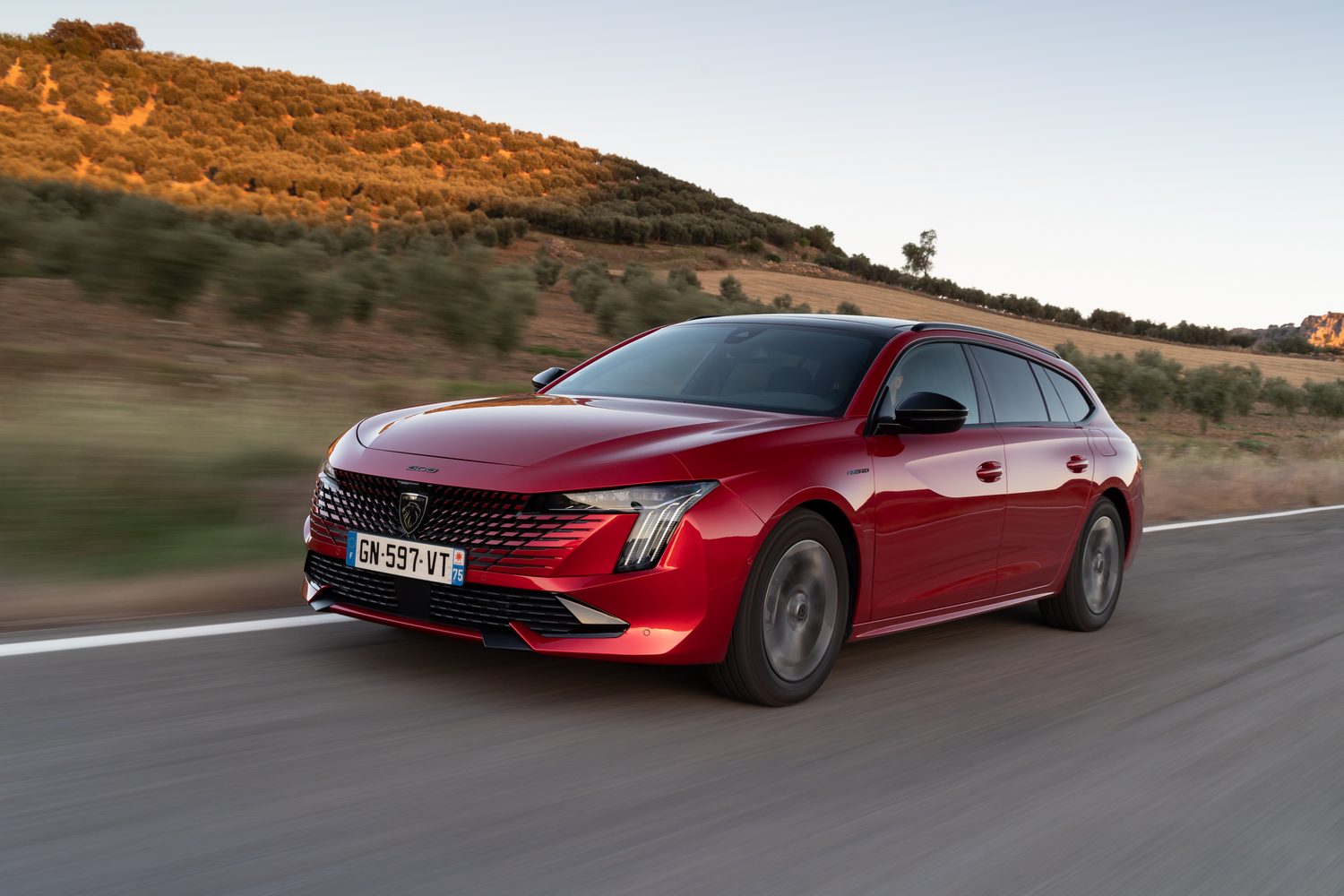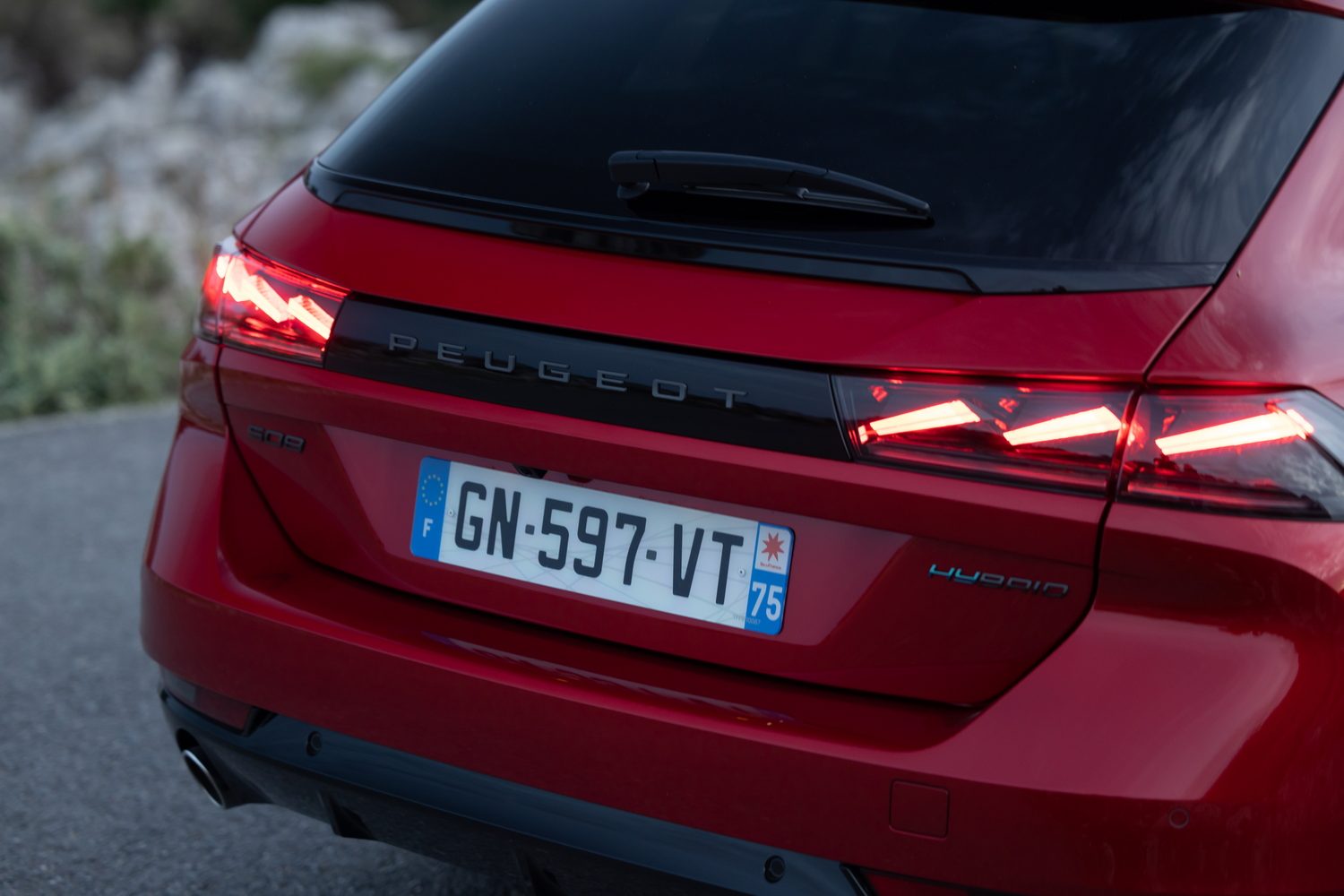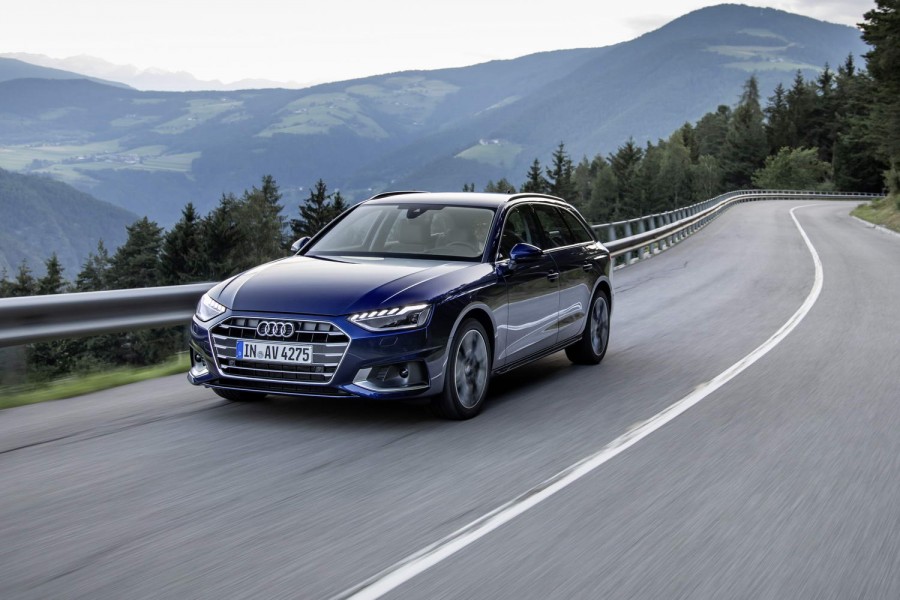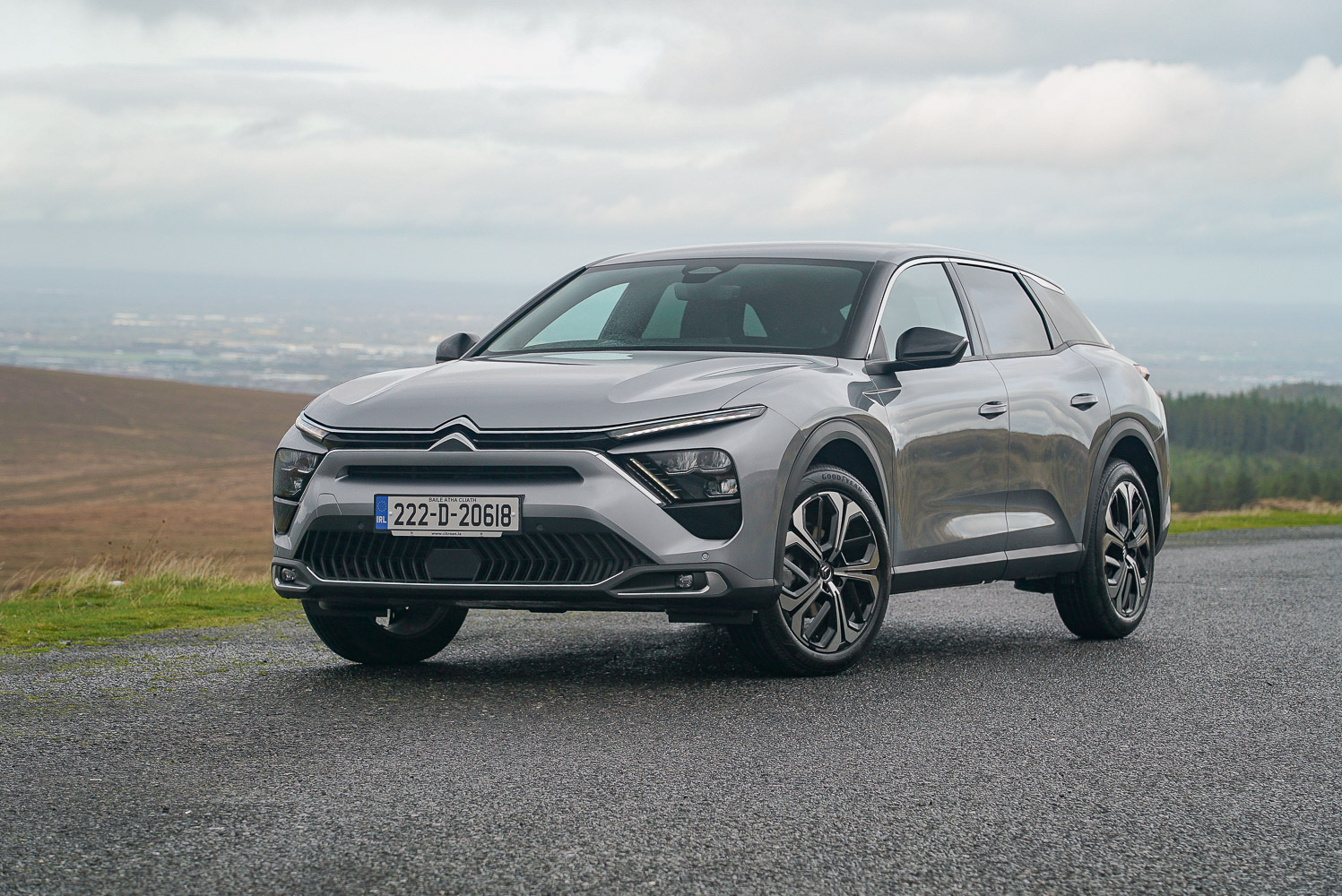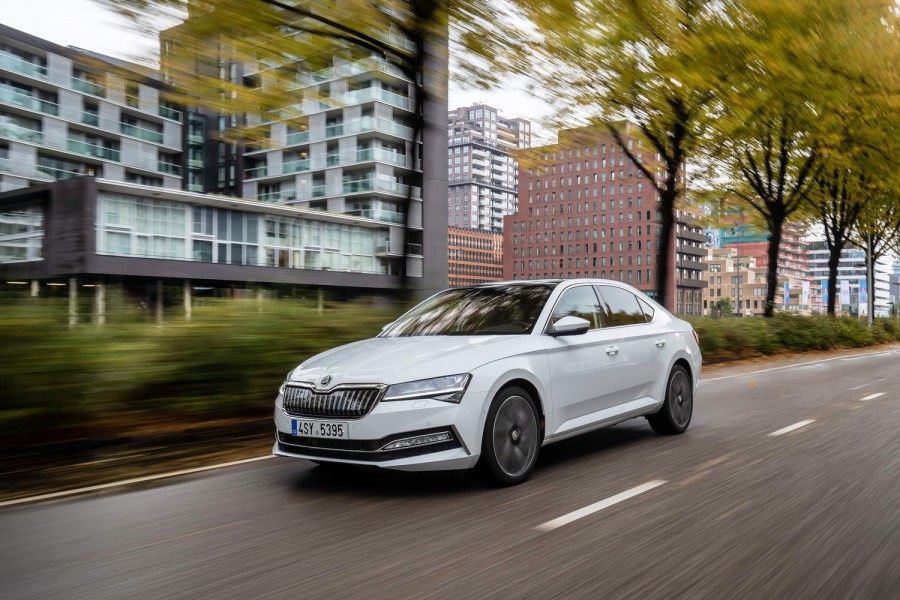Peugeot hasn't made any dramatic changes to the 508 in a mechanical sense for its mid-life update, but the sleek fastback and SW estate do get a new nose and some detail changes to the cabin. In a market dominated by SUVs, does it have any hope?
In the metal
Imagine Brad Pitt getting a facelift. Or Ana De Armas getting a nose-job. If you're already beautiful, why change anything? Well, Peugeot's rationale for changing the looks of the already-pretty-handsome 508 is that it needs a bit of freshness to keep people interested. Which is fair enough, as the 508's sales have been dipping as people move more and more to SUVs. Heck, Peugeot even introduced a sleek, low-roofed crossover rival of its own to the 508, in the shape of the intriguing 408.
So, to try and achieve that freshness, Peugeot has changed the 508's grille and lights. The grille now stretches out to the sides and down into the bumper, while the headlights are now extremely slim, and optionally equipped with Matrix LED technology. The 508 also now gets Peugeot's new 'three-claw' LED daytime running lights at the front, which slash their way down from the main headlights into the bumper. The new shield-shaped Peugeot badge is also incorporated into the grille.
Is it fresh? Yes, absolutely. Is it better? Well, everything's in the eye of the beholder where beauty's concerned, but I'm not sure. The old 508 was so darned handsome that this update is struggling to prove an improvement.
Down the sides you get new diamond-pattern alloy wheels, while at the rear there are new, sleeker brake lights with three angled slashes under clear glass lenses, which bring the 508 into line with the Peugeot 308.
Inside, much is the same as before. You get the same low-slung driving position, the same digital instruments and the same big central touchscreen angled towards you, with the same 'piano key' shortcut buttons beneath it.
What is new is the software on that screen, as the 508 gets the upgraded system from the 308 and 408. It's still not the best-in-class, but it is easier to use than the old system and functions which often took a long and baffling search through various menus now take no more than a couple of clicks. It's still annoying, however, that the air conditioning controls are on a separate screen menu, rather than being 'always on' in their own separate section of the screen.
Down on the centre console, there's a new toggle-style automatic gear selector, and the option of some very swish-looking new wood trim, too.
Comfort is excellent, and the front seats are terrifically comfortable. Space is fine as long as you're no taller than six-foot or thereabouts.
The boot in our SW estate test car is hugely useful with 530 litres of luggage space up the luggage cover, meaning there's more space in there than in the supposedly more practical Peugeot 3008 SUV. More space too - at 1,780 litres - when you fold the back seats down. The 508 fastback's corresponding figures are 487 litres and 1,537 litres. Regardless of the extra luggage space, we'd have the SW estate for its looks.
Driving it
There is one major mechanical change for the 508, but it's more of a new-to-it newness than being outright new - the 508 can now be had with the same 180hp plug-in hybrid powertrain that you'll also find in the Peugeot 308 hatchback and SW, and the 408 crossover. Previously, the only plug-in hybrid 508s were the 225hp front-wheel-drive version or the range-topping PSE (Peugeot Sport Engineered) model with 360hp and all-wheel drive.
We reckon that the 180 hybrid is a worthy addition. Although it's 45hp down on the 225 variant, both models have the same maximum torque rating - 360Nm - so unless you're absolutely wringing its neck, you'll probably never reap the extra power benefit of the 225 anyway.
With a full charge in the battery, you should be able to get around 40km of useable electric range, although that will reduce if most of your mileage is fast dual-carriageway work. It's also worth noting that the 12.4kWh battery recharges as standard at only 3.7kW, so go for the optional 7.4kW charger if you plan to charge from a home wallbox or kerbside chargers.
Cruising around in electric mode is deeply pleasant, as the 508 is refined and it rides exceptionally well. Get out onto the open road and it's even better. It's worth switching over to Sport mode there, as the steering weights up nicely and there's no significant impact economy. Needless to say, that overall economy is unlikely to match the official 1.2 litres per 100km from the official WLTP test without obsessive plugging in to charge the battery between short journeys, but in real-world driving it should be possible to get around 5.0 litres per 100km in mixed road conditions, and around 6.5 litres per 100km on long motorway runs; both are respectable figures.
Better still, the 508 feels so gloriously fluid when you corner. Although the steering has a slight off-centre dead patch, once you have a little lock dialled on, you start to remember just how nice cars were do drive before we added an extra metre of body height and jacked-up suspension. Even with the extra bulk of the hybrid system, the 508 feels like a car that has its weight in the right place, down low and well-distributed, which means that on a twisty road you can truly enjoy getting it to flow from apex to apex, while that well-tuned suspension soaks up the worst of the bumps.
The only major dynamic downside is that the braking system can feel a little hesitant as it swaps from regenerative braking to physical pads and discs. It's a common hybrid car flaw.
If you want more of this, then the more powerful PSE version, with its chassis and hybrid system designed by the same people who made Peugeot's remarkable 9X8 Le Mans racer, is well worth a look. With 360hp, it's no BMW M3 rival, but it's more than quick enough for most purposes, and feels exceptionally agile and enjoyable to drive (albeit that steering dead patch feels like more of an issue).
What you get for your money
We're still waiting for Peugeot Ireland to set prices and specs for the updated 508, so will update this section when we know more.
Summary
Doubtless, most Irish car buyers will continue to ignore the Peugeot 508, and doubly so the 508 SW estate. That's been the way of things for many years now, and it's unlikely to change. Well, more fool those that do ignore this car - the 508 SW looks great (if not necessarily any better than it did before), drives with precision and poise, and is actually more practical than many SUVs and crossovers. How Peugeot Ireland prices this new 180hp plug-in hybrid will be crucial, but it's a car well and truly worthy of your consideration.

